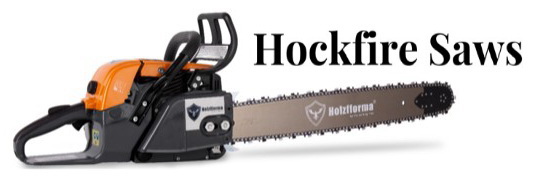Return of the VCM: The LT42e Resurrection, Part 2
(Or: How I Learned to Stop Worrying and Love the Short Circuit)
Hello again, fellow electric tractor tamers and backyard engineers.
If you remember Part 1, I was locked in a dramatic standoff with my Cub Cadet LT42e. The VCM, that mysterious black box of dashed hopes and error codes, had become my nemesis. Thanks to a generous loan, I finally got my hands on a known-good VCM to test my working theory. I installed it with hope in my heart.
Spoiler: It didn’t work. Same error codes. My wife sighed knowingly. I stared blankly at the mower. We were back at square one, just with slightly more desoldered components and existential dread.
Troubleshooting Reloaded: Finding the Real Culprit
Rather than declare defeat, I doubled down. This time, instead of poking things at random and blaming the VCM, I tried isolating each motor controller
on the mower itself—not bench testing. One at a time, I disconnected two controllers, left one connected, and powered the mower.
To be clear:
I used 31V because that’s literally the maximum my bench power supply could provide. I would’ve gone higher, but unless I wanted to hook up jumper cables to the sun, 31V was all I had.
As I went through each controller, I carefully watched the error codes:
- Left blade controller? No overload.
- Drive motor? No issue.
- Right blade motor? Boom—current maxed instantly. Error codes stayed. Current limit pegged.
Bingo.
Decoding the Power-Up Ritual
Here’s what I believe now is the LT42e startup sequence, based on reverse-engineering, observation, and a bit of frustration-fueled enlightenment:
- Key inserted and pushed in: The VCM sends out a 12V pre-charge voltage. This doesn’t go through the contactor—it flows through series resistors inside the VCM and reaches out to the motor controllers and sensors.
- Diagnostic phase: If everything’s happy and responding over CAN, the VCM says, “Cool,” and sends 12V to the contactor coil.
- If something’s unhappy? The VCM throws a silent tantrum. No contactor. No voltage. No mow.
My right blade motor controller had a dead short from power to ground. That pulled the pre-charge line down to zero, effectively turning off
all the controllers by starving them of power. No power, no CAN, no handshake. So the VCM did its job: it said no.
The Deepest Dive Yet: Opening the Motor Controller
With the harness in pieces, VCM cracked open, and my pride bruised, I decided to operate.
I opened the right blade motor controller like it was Thanksgiving dinner. A few capacitors came off to expose the internals. Sure enough, a power trace was glowing under load like a toaster coil. Let’s call it what it was:
a hot, smoldering short.
View attachment 459363
Pro tip: If you don’t have a thermal camera, you can also give the circuit 3 amps and wait for smoke signals.
Disclaimer: That’s a joke. Please don’t actually do this unless you enjoy turning your components into charcoal briskets. You’ll probably just cook something else in the process—ask me how I know.
Once I dug out the carbonized debris (which I assume used to be something important), I applied
solder mask to rebuild the trace’s integrity and
reinstalled the capacitors I had removed during the diagnosis. Then came the VCM reassembly—specifically reinstalling the mystery meat transistor, about 2mm x 2mm (roughly five cow hairs in width, for us metric-averse folks).
View attachment 459364
To my surprise,
it still worked.
Click. Glorious Click.
With everything hooked back up and parts back in their places, I pushed in the key.
Click. The contactor engaged.
I didn’t scream with joy, but only because I was too stunned. The mower worked. I even mowed the lawn. It was the most satisfying patch of grass I’ve ever trimmed.
Bonus Discovery: The CAN Translator Box
Inside the motor controller, I also found an interesting sidecar PCB encased in what looked like a copper Faraday cage, soldered directly into the main board. Naturally, I desoldered it.
It turned out to be a simple daughterboard with a few CAN-related ICs and passives—likely to translate CAN to something the main controller microcontroller understands.
My theory: This tiny board is what differentiates a left motor controller from a right one. That means, in theory, if you’re savvy with a soldering iron, you could grab any used LT42e or ZT1-42e motor controller, swap in your original CAN board, and poof—it becomes the correct one.
I’ve got a candidate controller on the way (from the ZT1, possibly for the left side), and yes, I’m going to crack my mower open
again to test this theory.
Bonus Bonus: Full Wiring Diagram
Attached below is the full LT42e wiring diagram, featuring a single-VCM setup (with either the “leaf” or “!” icon button pad). Hopefully, this helps future troubleshooters skip past some of the pain.
Final Thoughts
These machines are absolutely repairable—with patience, a good iron, and respect for high-voltage systems. They just happen to be wrapped in layers of obfuscation and mediocre support.
I hope this helps someone out there who’s lost in Cub Cadet CAN-bus purgatory. I’m happy to answer questions or share part numbers, pinouts, or colorful metaphors.
Stay tuned for the motor controller transplant update. Until then—may your resistors stay cool and your diagnostics stay sharp.






